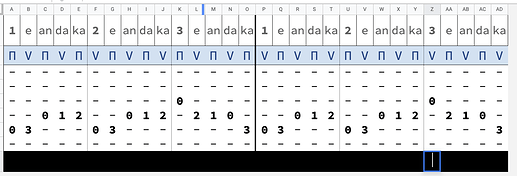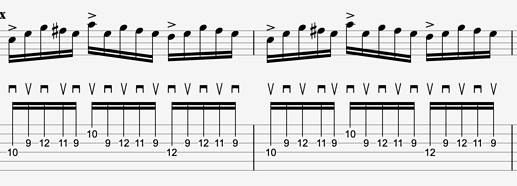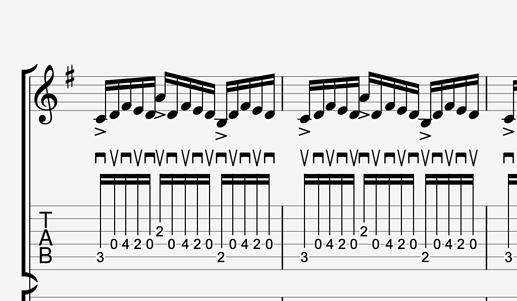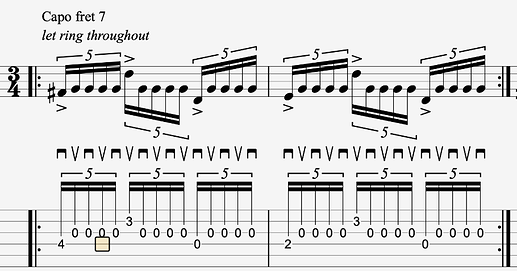Possibly a long shot, but curious if anybody else has dug into these much, or anything related. I think the first challenge is just properly feeling a quintuplet subdivision, then there’s the strange physical sensation of getting your body/picking hand to produce them in time and still feeling them as legit groups of 5, as opposed to say, 5 groups of 2. I think the latter is much, much easier.
I don’t have any specific question, just open to anybody’s comments about things like:
- alternate picking riffs/melodies based off of quintuplets, either as part of a song or just as an exercise
- examples from riffs, solos, melodies
- composing with the concept
- using them to ‘spot check’ dbx
- anything else related
Over the years I’ve become a little obsessed with I guess what I call “fippers”: melodies or riffs that have an odd number of notes so when repeated (with pure alternate picking) have the reversed down/up strokes. They’re fun to come up with and provide a bit of a ‘spot check’ when I’m working on double escape things to make sure I’m not favoring one type of escape.
So of course any 5 note pattern alternate picked and repeated will achieve that criteria, but it’s not very interesting to repeat 5 notes over and over, and you can’t fit that many different types of string changes within 5 notes. So lately I’ve been enjoying trying to come up with different little riffs in 3/4 using quintuplets, so you get the 5x3, then on the repeat you’ll have to do the same 15 notes with the picking reversed.
I know by now this is pretty niche, but if anybody is interested, some sketches I’ve been saving and practicing a bit:
and of course, someone can take the same notes and accents and just add/remove some notes at the end or beginning to make it fit into 4/4 or another more standard meter
eg this 15 note pattern
if played twice with two beats added to the end is just two measures of 4/4, but still has all the same picking challenges
Meh…just sharing and throwing it out there. At minimum maybe somebody else will enjoy goofing off with these for a different kind of challenge.






